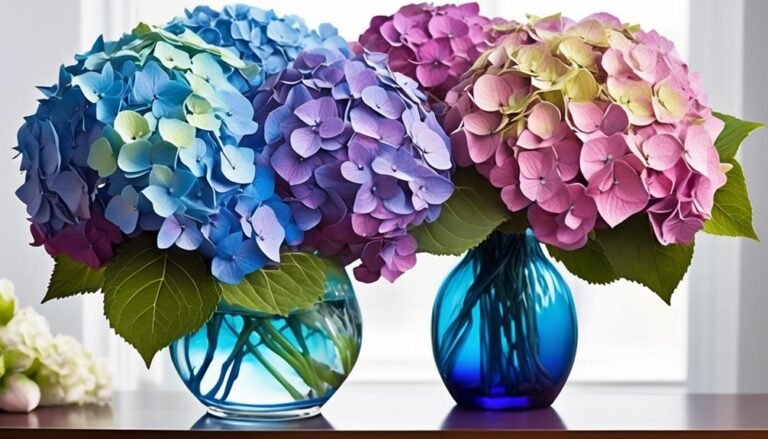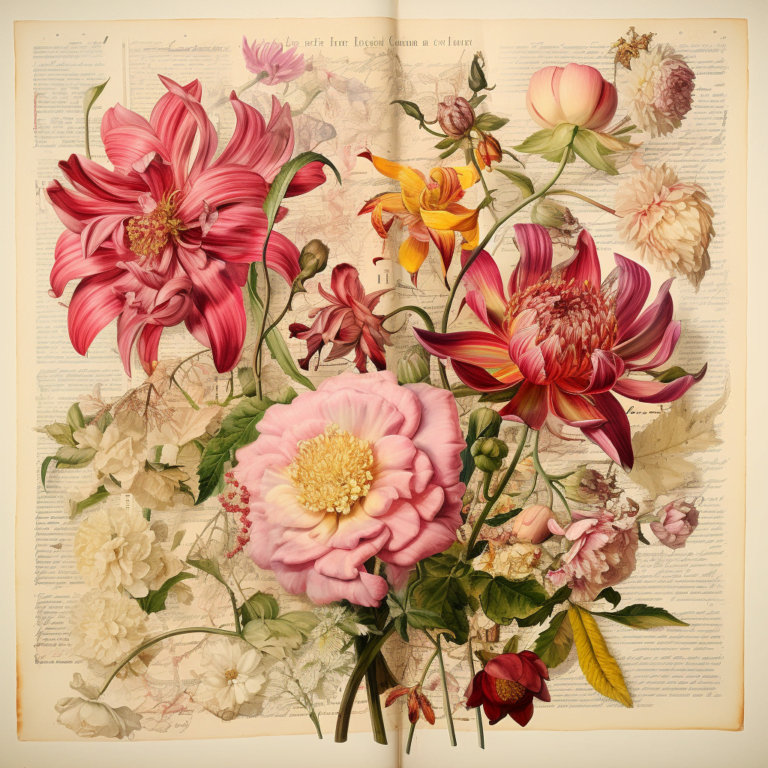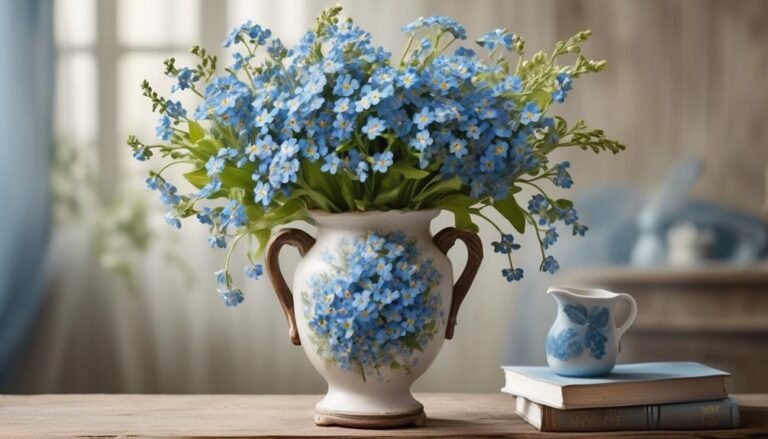Popular Types of Florist Flowers – Daffodil
Daffodils are a popular choice for florists due to their trumpet-shaped corona and vibrant hues, adding elegance and cheer to arrangements. They come in a variety of shapes, sizes, and color combinations, such as the classic yellow Dutch Master and the delicate white Ice Follies. Understanding the botanical intricacies of daffodils can help floral designers create stunning arrangements.
Daffodils belong to the Amaryllidaceae family and are known for their trumpet-shaped corona and six petal-like tepals, which come in various colors, including yellow, white, orange, and pink. They are also known for their fragrance, which can vary between different cultivars.
Daffodils are commonly associated with spring and are often used to symbolize new beginnings and rebirth. These flowers are also known for their resilience, as they can survive for several days after being cut, making them a popular choice for floral arrangements.
Scientific Name
The daffodil, scientifically known as Narcissus, belongs to the Amaryllidaceae family and the order Asparagales. This iconic spring flower holds rich symbolism and cultural significance across different societies.
In Western cultures, daffodils symbolize rebirth, new beginnings, hope, and renewal, while in some Eastern cultures, they're associated with good fortune and prosperity.
Apart from their cultural symbolism, daffodils have been used for their medicinal properties for centuries. The plant contains alkaloids like galantamine, which have shown potential in treating Alzheimer's disease by improving cognitive function and memory. Additionally, daffodils have been utilized in traditional medicine for their emetic and diuretic properties. However, it's important to note that daffodils contain toxic compounds, especially in their bulbs, and should only be used under the guidance of a qualified healthcare professional.
Understanding the scientific name of the daffodil, Narcissus, provides insight into its taxonomical classification and evolutionary relationships. Moreover, recognizing its symbolism and potential medicinal uses enhances our appreciation for this iconic spring flower.
Background History
Daffodils have gained popularity and symbolism in various cultures due to their rich historical significance. In ancient Greek and Roman mythology, the daffodil was associated with the tale of Narcissus, who transformed into the flower after falling in love with his own reflection. This mythological connection has influenced the flower's representation in art and literature, symbolizing vanity, self-love, and rebirth.
Introduced to Britain by the Romans, daffodils have become emblematic of renewal and new beginnings, blooming in early spring. This has led to their widespread use in art, literature, and religious symbolism to represent hope and optimism.
The cultivation and hybridization of daffodils over the centuries have expanded their popularity and symbolism, offering a wide range of shapes, colors, and sizes for diverse artistic representations.
The enduring symbolism of daffodils, representing hope, renewal, and the promise of a bright future, has firmly established them as cherished flowers worldwide.
Physical Description

Daffodils come in a wide range of shapes, sizes, and color variations, making them a versatile and visually captivating addition to any garden or floral arrangement. The American Daffodil Society has classified daffodils into 13 different categories based on their flower shape, offering enthusiasts a diverse selection to choose from. Whether it's the classic trumpet shape, the elegant split-corona, or the intricate double blooms, daffodils offer a plethora of options to suit different tastes and preferences.
Their unique shapes and vivid colors make daffodils a popular choice for arrangements, adding elegance and vibrancy to any setting. Understanding the diverse physical attributes of daffodils enables enthusiasts to make informed decisions when planning and creating stunning daffodil arrangements, enhancing the visual appeal of any space.
Colours and Characteristics
Daffodils come in a wide range of colors, including yellow, white, orange, and pink, with yellow being the most common. Some varieties even have a bi-color pattern, adding to their appeal. This color diversity makes daffodils versatile for different floral arrangements and garden designs.
Daffodils also vary in size, with options ranging from small to large blooms. Miniature daffodils are great for rock gardens or containers, while standard-sized daffodils are commonly found in gardens and landscapes. Additionally, daffodils display distinct cup shapes, such as trumpet, large-cupped, and double daffodils, each with its own unique appearance.
Symbolically, daffodils represent rebirth, new beginnings, and hope in various cultures around the world. Their association with spring and renewal makes them popular choices for spring flower arrangements and bouquets, often used to convey messages of optimism and positivity.
Understanding the diverse colors and characteristics of daffodils allows for a deeper appreciation of their symbolic value and cultural importance.
Varieties Available

Daffodils come in 13 different varieties, each with its own unique flower shape, offering a diverse selection for gardeners. These varieties cater to different gardening needs and preferences, providing a wide range of options to choose from.
- Trumpet: These daffodils have a central corona (trumpet) that's as long as or longer than the petals, giving them a striking appearance in the garden.
- Large Cup: Known for their large, showy cups, these daffodils come in various colors and are ideal for naturalizing.
- Double: With multiple petals and a double corona, these daffodils create a full and ruffled appearance, adding elegance to any garden.
- Fragrant: These daffodils not only boast beautiful blooms but also offer a delightful fragrance, making them perfect for indoor arrangements and adding a pleasant aroma to your garden.
Daffodils hold different cultural symbolism. In some cultures, they symbolize rebirth and new beginnings, making them popular for spring celebrations. In other cultures, they symbolize wealth and good fortune, often used in traditional ceremonies and decorations. Understanding the cultural significance of daffodils can deepen your appreciation for these beautiful flowers and enrich your gardening experience.
Seasonal Availability
Daffodils are known for their seasonal availability, gracing the landscape from late winter to early summer. Their peak blooming period occurs in early spring, with variations based on regional climate. In warmer areas, daffodils bloom early spring, while in cooler regions, they bloom from late winter to early spring, and are available in markets from late winter to early summer.
Besides their aesthetic appeal, daffodils are low-maintenance and can naturalize, meaning they multiply and return year after year. They're also deer-resistant, making them a practical choice for many gardeners.
Care Tips

Daffodil Care 101: Keeping Your Flowers Fresh
- Arranging Daffodils in a Bouquet
- When creating a daffodil bouquet, keep them separate from other flowers at first. Daffodils release a sap that can harm other blooms, but after being in water, they can be combined with other flowers.
- Tip: Daffodils can be paired with tulips and peonies in a bouquet.
- Watering and Trimming
- Place daffodils in a clean vase with cool water and trim the stems at an angle to help them absorb water better.
- Change the water every few days and re-trim the stems to maintain freshness.
- Light and Temperature
- Keep daffodils away from direct sunlight and heat sources to prevent wilting.
- Ideal temperature: 50-70°F (10-21°C).
- Pests and Diseases
- Watch out for aphids, slugs, and snails that can affect daffodils.
- Prevent diseases like basal rot and narcissus bulb fly by ensuring proper soil drainage and bulb storage.
What Makes Anemone Flowers a Popular Choice for Florists Similar to Daffodils?
Anemone flowers have become popular anemone florist flowers due to their vibrant colors and delicate appearance. Similar to daffodils, anemones symbolize anticipation and excitement, making them a popular choice for florists looking to add a touch of elegance and charm to their arrangements.
Conclusion
Daffodils, also known as Narcissus, are a popular choice for florists due to their vibrant colors and diverse shapes. They're commonly featured in spring flower arrangements and bouquets, symbolizing rebirth and new beginnings.
With proper care, daffodils can add beauty and joy to any floral display, making them a valuable addition to any florist's inventory.






